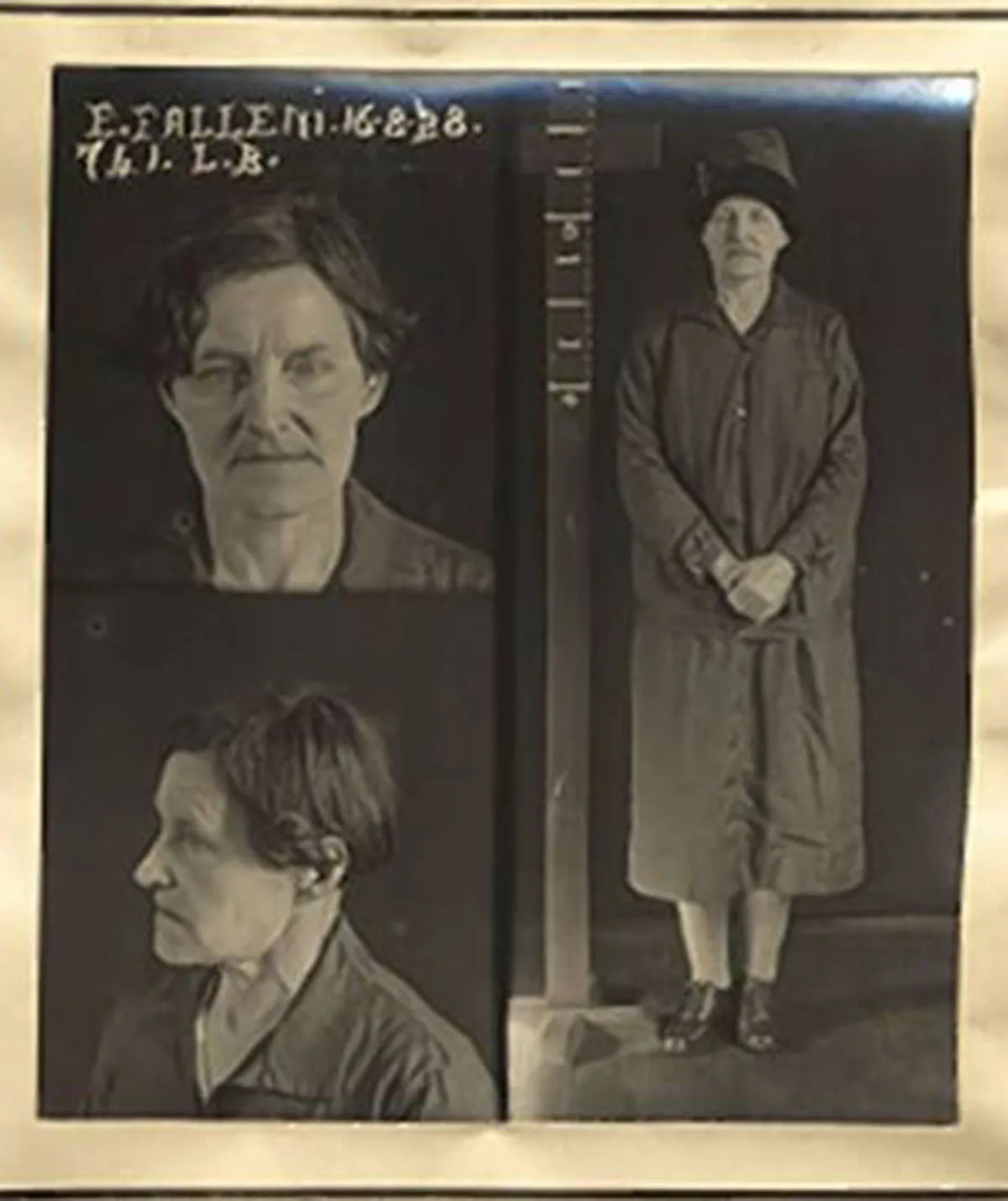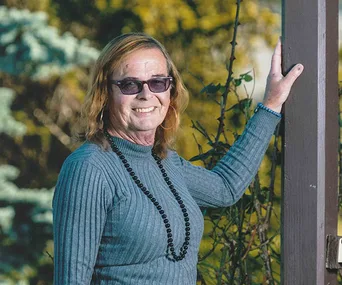- Eugenia Falleni, born a woman, later became Harry Crawford
- Living as a man, Harry married widow Annie Birkett
- Days after Annie admitted she’d ‘found out something amazing’ about her husband, her charred remains were discovered at a river
- Harry went on to re-marry, managing to deceive a second unsuspecting wife by using a wooden dildo, until he was eventually arrested for murder
- Here is the full story that captivated Australia and New Zealand in 1920…
The case of Eugenia Falleni, dubbed ‘the Man-Woman trial’, was a sensation with the press of the day who understood little about transgenderism.
Eugenia was born female in Italy in 1875, and at two years old, migrated to New Zealand with her parents.
As a teenager in Wellington, Falleni often adopted a male persona, ‘Eugene’, dressing in men’s clothing and taking work in brickyards.
When she was 19, she became a cabin boy on a ship that sailed regularly between New Zealand and Australia.
By the ship’s arrival in Newcastle in 1898, Falleni was pregnant with the child of the captain, Martello, who’d discovered her secret.

Captain Martello abandoned her at the port, and she went to Sydney where she gave birth to a daughter, Josephine.
The child was left in the care of an older Italian woman who lived in Double Bay. Meanwhile, Falleni adopted the male persona ‘Harry Crawford’ and worked a series of jobs around Sydney.
The fateful meeting
In 1912, now living as a man, Falleni became the handyman for a wealthy doctor in Wahroonga and took an interest in the housekeeper, a widow named Annie Birkett.
He would often take Annie and her son, also Harry, nine, for picnics or to the circus, and neither were aware of her concealed identity.
Later that year, Annie moved to Balmain, NSW, with son Harry, and Falleni followed.
Harry Birkett said later that Falleni “was so persistent about his mother marrying him that she at last consented”.
Annie wed Harry Crawford on February 19, 1913. That same year, Josephine, 14, came to live with Falleni and the Birketts in Balmain.
Josephine later testified that she’d been instructed by Falleni to call her ‘father’ and not to let Annie know she was a woman.
In September 1917, Annie told a relative she’d “found out something amazing” about her husband.
On October 1, Harry suggested to Annie that they go for a picnic near Lane Cove River.
Next day, the charred remains of a woman’s body were discovered near the river in Chatswood, and a later coroner’s inquest reached an open finding on whether the death was an accident or suicide.

With no-one coming forward to identify the deceased, she was buried at Rookwood Cemetery.
Meanwhile, Falleni told Josephine and young Harry that Annie had “cleared off with a plumber”.
Suspiciously, the illiterate Falleni came to Harry, 15, with a newspaper and asked him to read what was written about the woman found at Lane Cove.
Josephine moved out and shortly after, Falleni sold off Annie’s belongings, and moved with Harry into a boarding house run by a Mrs Schieblich.
Falleni took Harry for a trip to a cliff to throw stones, an infamous suicide spot near Watsons Bay.
Climbing over the railing, Falleni encouraged Harry to sit beside him on the cliff’s edge. Feeling nervous, Harry refused and the two returned home.
A stormy night a week later, Falleni, with a shovel in hand, took Harry for a tram ride to Double Bay.
Walking into bushland, Falleni ordered young Harry to dig a hole.
Falleni guzzled a bottle of brandy, becoming increasingly emotional, before telling the youngster to stop digging and again the two returned home.
Son’s suspicions
Harry Birkett soon left his ‘stepfather’ to live elsewhere. As he grew older, he became more suspicious about his mother’s disappearance.
In June 1920, he recalled Falleni’s interest in the body at Lane Cove and made enquiries with police.
He was able to identify the personal belongings of the victim as his mother’s and ‘Harry Crawford’ was arrested on July 5, 1920.

By then, Harry had remarried another woman, Elizabeth Allison, who told media that ‘Harry Crawford was an ideal husband.’
When police raided their home, an item “made of wood and rubber bound with cloth in the shape of a phallus or dildo”, explained how Falleni managed to deceive his wives.
Eugenia Falleni murder trial
In court, Eugenia Falleni, claimed Annie slipped and hit her head, and that he’d burnt the body to prevent the police discovering his gender identity.
However, Mrs Schieblich testified that Falleni had admitted to giving his wife a “crack on the head” after a “jolly good row”.
It was revealed that Annie had discovered the truth about her ‘husband’ and that this was Falleni’s motive for setting her alight, likely while she was still alive.
Josephine and Harry Birkett, along with others, also testified against him in court and the jury found him guilty of murder after just two hours’ deliberation.

Eugenia Falleni, 45, otherwise known as Harry Crawford, was sentenced to death which was commuted to life at Long Bay Prison.
Falleni insisted on being placed in the women’s section and was permitted by a doctor who attested to her gender “in a matter of seconds”.
After serving 11 years, Falleni was released on the condition she remain living as a woman.
She spent the remaining years of her life as ‘Jean Ford’, until she was hit by a car on Oxford Street, Paddington, and died June 10, 1938 aged 62.


